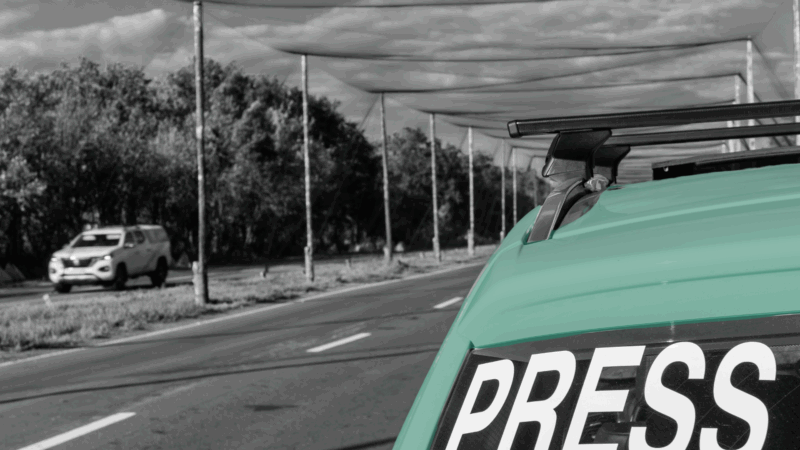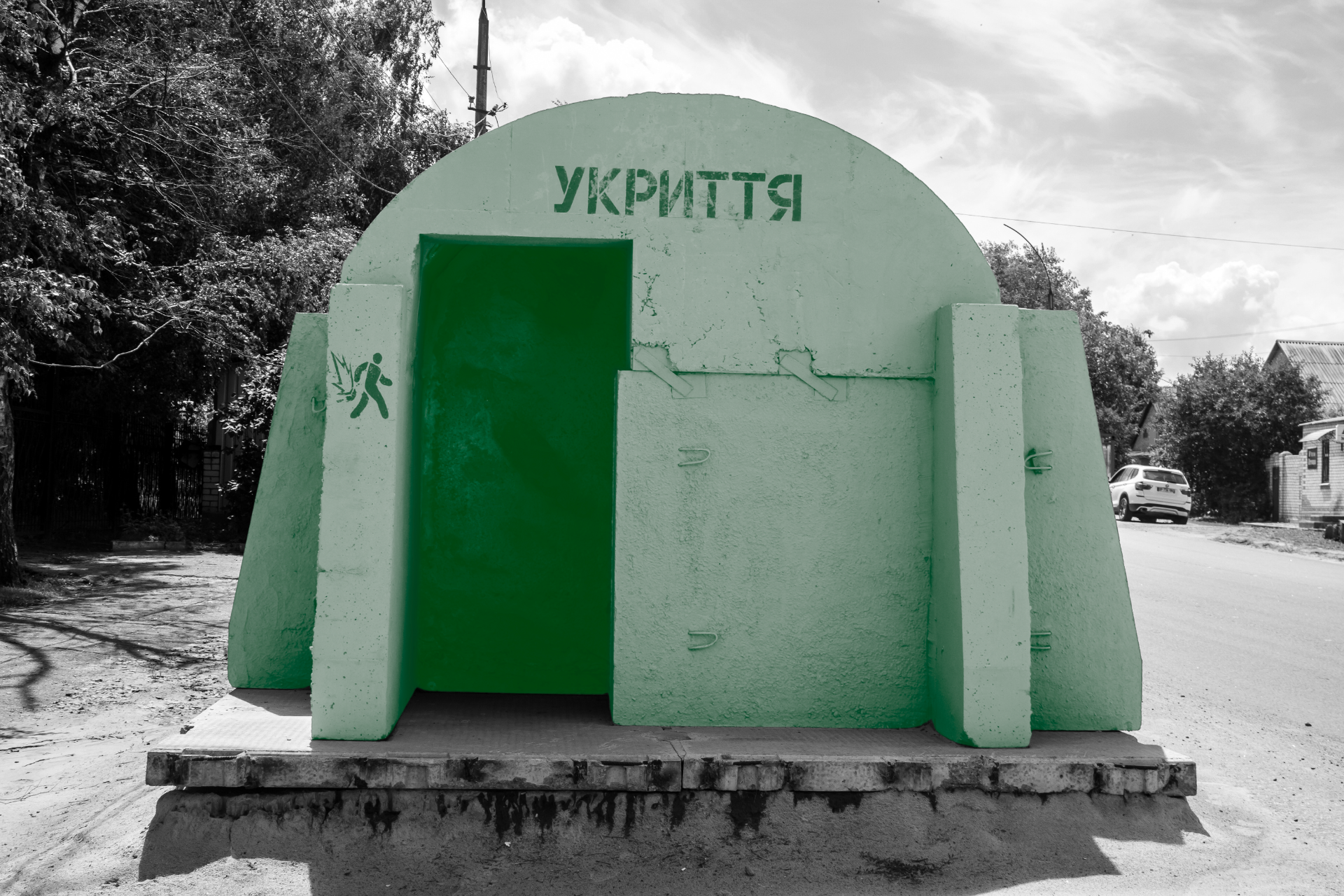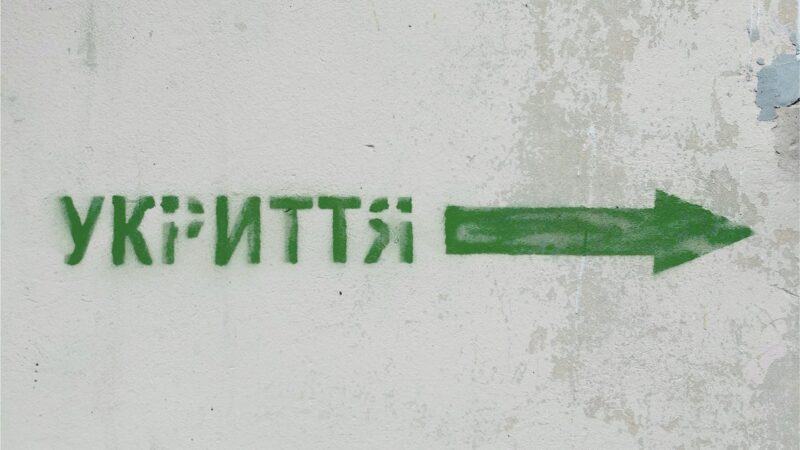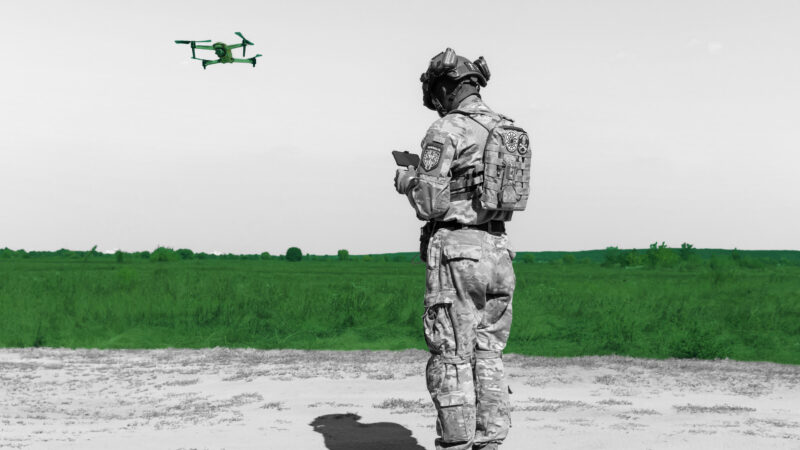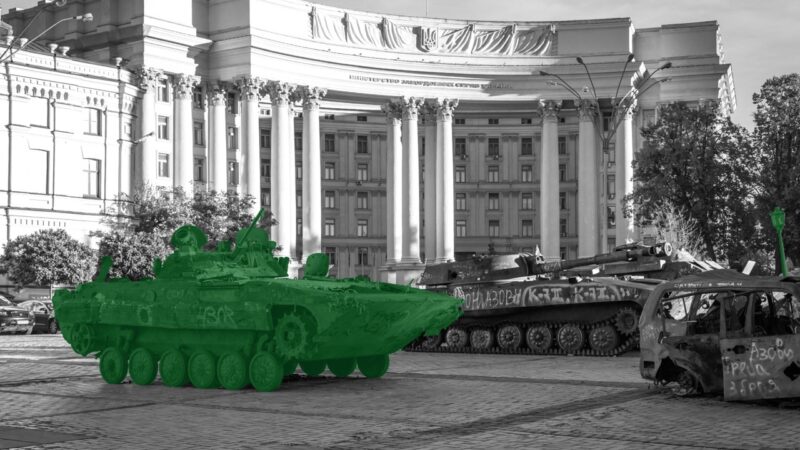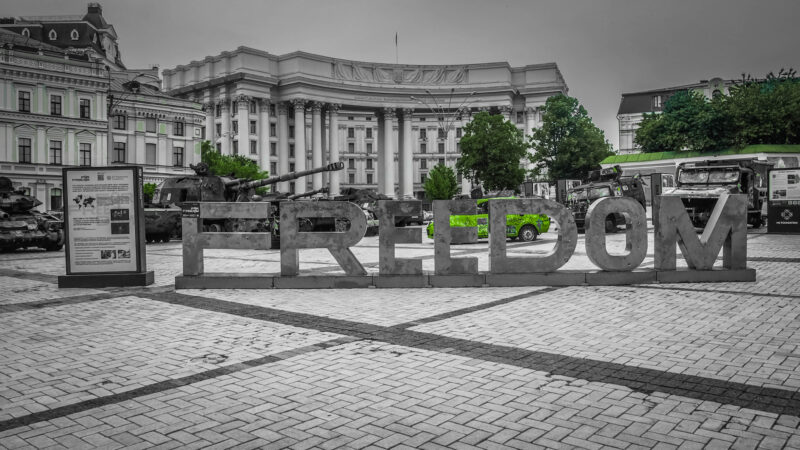The fall of Lysychansk and the fate of the Donbas

Lysychansk, a city in Luhansk oblast, fell on 2 July, a week after the Russian capture of Siverskodonetsk, its sister city across the Siverskyi Donets River. It effectively signified the Russian occupation of all of Luhansk oblast. It was not a “liberation,” as Vladimir Putin is fond of saying, but an occupation, ruin, and enslavement. The extent of the destruction of the cities, towns, and villages in the wake of Russian advance is beyond our imagination. What does all this mean for the fate of Ukraine in general and of the Donbas in particular?
The reality of war
As expected, Russia conquered Siverskodonetsk and Lysychansk using a tried-and-true method—that is, by levelling everything to the ground, as it had done in Chechnya and Syria earlier. Destruction of non-military civilian objects and people is of no concern to Russian politicians and military commanders. When Ukraine’s armed defences fail, Russia moves in to de-Ukrainianize areas by killing and deporting Ukrainian citizens. As Russia advances farther into Ukraine, particularly in Donetsk oblast, it will certainly employ the same method in trying to capture additional Ukrainian territory. This strategy reflects Moscow’s complete indifference to human life and suffering, including of its own soldiers.
Russian President Vladimir Putin has positioned himself as the successor to Iosif Stalin, the Soviet dictator. During World War II, on average more than 5,000 Soviet soldiers were killed every day, totalling some 7.5 million deaths in the war against Germany. The vanquished Third Reich, which fought on two fronts and on land and sea (whereas the Soviet Union fought on just one front and almost exclusively on land), lost far fewer soldiers—four to five million dead. The Soviet fatality numbers likely also include more than 150,000 of its own soldiers who were executed by the Red Army for cowardice, insubordination, desertion, and other offenses, whereas the Germans executed approximately 15,000 of their own soldiers, only some ten percent of the Soviet figures. The Russian war hero Marshall Georgii Zhukov was responsible for many of the Soviet executions. During WWII Zhukov got along very well with Stalin, who famously trusted no one. They held a shared belief in political and military priorities over all else (including human lives). To best the Allied forces in the capture of Berlin in 1945, Stalin and Zhukov marched on without regard for the losses of Soviet soldiers, needlessly multiplying their casualties. Zhukov had already displayed an affinity with Stalin in 1939, in the battle of Khalkhin Gol against Japan. Although the Soviets won a resounding victory, their casualties were almost certainly higher than those of Japan. Zhukov’s own subordinates later expressed doubts about his command: “Zhukov did not care about any losses [of human lives] we suffered.”[1]
Similarly, in the present Russo-Ukrainian War one should not expect Putin to cringe from further assaults on Ukraine’s lands regardless of the cost to Russia in human and material resources. Unless he or his commanders are overthrown by the Russians themselves (or defeated on the battlefield by Ukrainian forces), it seems certain that Putin will continue to fight with fury and dirty tactics until he achieves his goal of usurping the Kyiv government and Russifying Ukraine. This is a truly gloomy prognosis, but it behooves us to prepare for a war of total destruction. One of Putin’s aims is to demonstrate to the world that Russia is invincible. This was made clear when on 7 July Putin claimed that the West was supporting Ukraine for the sole purpose of defeating Russia on the battlefield. Dismissing the huge loss of Russian lives (estimates range from 20,000 to within a whisker of 40,000) in the war so far, Putin has declared that Russia has barely begun to fight “in the larger scheme of things.”[2] Unless Putin is bluffing, it appears that Russia’s aggression can only be stopped by superior military force. This is the reality of the war in Ukraine.
Moscow and the Donbas
Moscow now claims that Russia’s aim in its “special military operation” against Ukraine is to “liberate” the Donbas. Initially, as in 2014, Moscow exhibited no special interest in prioritizing the capture of the Donbas. In 2014 Moscow had no illusions regarding the political loyalties of the people of the Donbas. In Moscow’s scheme for resurrecting “New Russia”—which ultimately failed—the Donbas did not occupy center stage. Moscow’s capture of parts of the Donbas in 2014, which led to creation of the Luhansk and Donetsk “people’s republics,” was more accidental than carefully planned, due in large part to Moscow’s failure to capture the eastern-southern Ukrainian lands extending from Kharkiv to Odesa. It is indisputably not the case that the Russophones in the Donbas were being terrorized, as Moscow claimed at the time as an excuse for invading. Nor was there any strong popular desire in the Donbas for Russia to meddle in its political life—in 2014 or 2022—notwithstanding Moscow’s contrary claims. In February of this year Putin mendaciously claimed that it was necessary for him to end the “genocide of millions of people living there [in the Donbas] who trust only us [Russia].”[3] Nothing could be farther from the truth.
The Donbas has historically been a baffling region, characterized by distrust of all outside political forces, particularly Moscow. In a poll taken in April 2014 after Russia’s covert military takeover of Crimea and just as armed conflict was beginning in the Donbas, 67 percent of the four eastern regions (including Donetsk and Luhansk oblasts) answered “No” to the question “Do you support the decision of the Russian Federation to send its army into Ukraine under the pretext of protecting Russian-speaking citizens?” Only 19 percent answered “Yes.”[4] Another poll taken in the same month showed that the majority of the people in the Donbas regarded themselves as citizens of Ukraine: 79.7 percent and 72.7 percent in Donetsk and Luhansk oblasts, respectively, supported the idea that “Ukraine and Russia must be independent but friendly states, with open borders, without visas, and customs houses.”[5] Although difficult to quantify, there was certainly no evidence in 2014 that anti-Ukrainian, pro-Russian forces in the Donbas were strong enough to take over the Donbas politically or militarily, even had they been so inclined. The Donbas people themselves were surprised by the unexpected turn of events in 2014, which resulted in the formation of two “people’s republics.” True, there had been discontent with and distrust of successive governments in Kyiv, in the Donbas, as well as much of Ukraine, yet this did not mean that the Donbas population wanted a takeover by Moscow. What happened in the Donbas was not a “civil war” but an elaborately camouflaged military and political intervention by Russia. By all accounts, what happened was seen as Russia’s meddling in the Donbas. The idea of the Donbas as a bastion of pro-Russian forces is simply a myth. One needs to understand this myth in order to see clearly the future confronting the Donbas and Ukraine.
Were Kyiv and the West to accept as fact the myth that the Donbas has always been a pro-Russian bastion, relinquishing the Donbas to Moscow (e.g., to negotiate a cease-fire) would be easy. This is almost certainly what Moscow is counting on by occupying the Donbas after its failure to capture Kyiv, Kharkiv, and other major cities. The capture of the Donbas may seem a negligible consolation prize for Moscow, but it is one that Putin can live with until resuming his inevitable aggression farther into Ukraine. Fortunately, neither Kyiv nor the Ukrainian military buy into this myth about the Donbas and since 2014 have been fighting for the Donbas lands.
The danger of losing the Donbas is still real, however. The Western press, politicians, academics, and observers continue to speak as if they accept at face value the Russian propaganda that the Donbas is historically Russian. What they fail to understand, or willfully ignore, is that the Donbas was historically Ukrainian Cossack territory and was never Russian. However Russified linguistically it became, the Donbas has always been Ukrainian, and at no point in modern history did its ethnic Russian population surpass that of ethnic Ukrainians.
Unfortunately, there is also a danger to the Donbas from within Ukraine itself. Some Ukrainians who are unfamiliar with the Donbas are dismissive of it. Quite dishearteningly, a number of leading Ukrainian intellectuals are among them. One prominent Ukrainian writer wrote in 2005 and 2006, in the wake of the Orange Revolution, that the Donbas was a region that “easily succumbs to political manipulation in connection with a black-and-white view of the world,” and that its people were “medieval-feudal” or “Cro-Magnon-Neanderthal” (кроманьйонської та неандертальської). The “ballast of the Donbas,” which the writer called a “big proto-cultural wasteland” (велику протокультурну пустку), could become an impediment to Ukraine’s integration into Europe.[6] Russia exploits this sort of errant prejudice with the aim of dividing and conquering Ukraine. Such discourse is the subject of Russian political life but not Europe’s.
True, the Donbas is not free of its own kind of prejudice. Some people in the Donbas may regard their compatriots from Ukraine’s western regions as “Banderites”—supporters of Stepan Bandera (1909–59), a mid-twentieth-century Ukrainian nationalist leader. Yet the Donbas is also known among Ukrainian nationalists from the western regions as a force that helped to democratize their nationalist platform. During World War II, for example, Ievhen Stakhiv (1918–2014) worked in the Donbas as a secret organizer of the OUN (Organization of Ukrainian Nationalists) and found that people in the Donbas treated the ideologue of Ukrainian nationalism, Dmytro Dontsov (1883–1973), as a “fascist.” Influenced by the people in the Donbas, Stakhiv, who had once idealised Spain’s Franco regime, “abandoned a narrowly defined Ukrainian nationalism and embraced the ideal of a democratic Ukraine without discrimination against its national minorities.” Stakhiv was grateful to the Donbas people for his democratic conversion.[7]
In any case, Russia’s military invasion of the Donbas has ironically served to blunt the prejudice toward the Donbas, although it has not died easily. In contrast, one cannot but be struck by the passion and tenacity of the Ukrainian soldiers who have been fighting for the Donbas since 2014. For them, the Donbas and its people are unqualifiedly Ukrainian.
Moscow and the “people’s republics” in the Donbas
It is also noteworthy that Moscow, while it occupied and swiftly annexed Crimea in 2014, has been in no such hurry to annex the Donbas. On the eve of invading Ukraine in late February this year, Moscow made a point of recognizing the two “people’s republics” in the Donbas as sovereign states. It could have declared their annexation but did not. It is possible that Moscow is waiting for the capture of all of the Luhansk and Donetsk oblasts before annexing them. As has been argued by many, interest in incorporation does have a voice among the leaders of the “people’s republics” and among the population of the occupied parts of the Donbas. As if to encourage this, Russia has been distributing Russian passports among the Donbas population, although exactly how many people have willingly received them or received them as insurance against an uncertain future is difficult to determine. As of the end of January this year, it is estimated that 635,000 residents, or 22 to 35 percent of the population in the two “people’s republics,” had obtained Russian passports.[8]
It should be pointed out, however, that just before the full-barrel war began in February, popular sentiment even in the Russian-occupied Donbas territory was ambivalent. An opinion poll conducted by a joint team of Ukrainian, Russian, and Western researchers just before Russia invaded Ukraine shows that more than half of the respondents had no interest in which government, Kyiv or Moscow, controlled the Donbas. There was little difference between those living in the Kyiv-controlled areas and the Russian occupied ones in the Donbas.[9] This was the view after almost eight years of occupation, one hardly encouraging to Moscow (or to Kyiv, for that matter, as far as the Kyiv-controlled parts of the Donbas are concerned). This kind of outlook faithfully reflects the historical and political nature of the Donbas: its population have distrusted and spurned all outside political authority, even though, like the Cossacks in the old days, they are happy to strike up an alliance with whoever might help them. This is a survival strategy for those straining to sustain life in the precarious border regions.
It seems probable that Moscow and the leaders of the “people’s republics” installed in parts of Donetsk and Luhansk oblasts have not been operating on the same wavelength. Putin’s blatant embrace of Russian imperialism must be alarming for some of the Donbas republics’ leaders. On the one hand, they need the Kremlin’s full support to secure and maintain their power and territory. On the other hand, if the Donbas should become part of Russia, it would become just one tiny region of the federation. With its antiquated industrial infrastructure, the uncertain future of the coal industry, and total devastation of the regions subjected to Russian conquest, the Donbas would be an enormous burden by any estimate. Impoverished by Western sanctions and isolated from the world economy, Russia would not and could not restore the Donbas to any meaningful degree. The onus of reconstruction would fall squarely on the shoulders of the Donbas people themselves. Under Ukrainian control, however, the Donbas would benefit from post-war reconstruction aid from abroad. Kyiv should make the most of these contrasting perspectives.
In the occupied lands of the Donbas and in the south of Ukraine, flags are hoisted of the defunct Soviet Union or with hammer-and-sickle symbols, along with the Russian national flags. Is this a sign of nostalgia for the “good, old, and stable” days under Soviet rule? Or might it be a sign of political disorientation in a population that trusts neither Moscow nor Kyiv? If it is a nostalgia, one aspect in particular of Soviet history could be inconvenient for Moscow, bent as it is on exporting the “Russian World” to Ukraine. Namely, in declaring Russian Federation’s recognition of the “people’s republics” on the eve of the war, Putin criticized Vladimir I. Lenin and the Bolshevik government for creating an “artificial” Ukrainian (Soviet) Republic in lands that belonged to Russia’s “historical territory.” (In 1918 Lenin disapproved of the separatist “Donets–Kryvyi Rih Soviet Republic” as harmful to the interests of Ukraine, disbanded it, and incorporated it into the Ukrainian SSR.) Instead of being grateful to Lenin, Putin notes, the Ukrainians have for some time been at work on “de-Communization,” demolishing memorials to Lenin. If Ukraine wants de-Communization, Putin has declared, it can have a real “de-Communization”—entailing in the establishment, or more appropriately, the restoration of the “Russian World” or Russian imperialist rule in Ukraine that would supposedly do away with the Soviet Communist legacy in Ukraine.[10]
Will this overt revival of Russian imperialist ambitions be accepted by the leaders of the Donetsk and Luhansk “people’s republics”? One possible development might be the “Chechenization” of the Donbas, achieved politically by co-opting local bigwigs in exchange for a degree of “autonomy” (i.e., local dictatorship) in the Donbas under Russian control. Ramzan Kadyrov, the Putin-appointed dictator in Chechnya—a region in the Russian Federation long known for its fractious history—has been sending soldiers to the Donbas for the Russian side in the current war, as in 2014. In a sense, the two “people’s republics” of the Donbas have been functioning since 2014 as Russian client regimes akin to Chechnya. “Chechenization” of the Donbas might enforce a degree of peace, but for how long? Time will tell whether Moscow can keep the Donbas (and Chechnya) under control.
Conclusion
If any in the anti-imperialist, anti-colonialist camp in Europe, the Americas, Asia, Africa, and elsewhere in the world have had lingering illusions about Russia and Putin, Putin’s war against Ukraine should have dispelled them. Yet it has not. Meanwhile, those on the anti-democratic right continue to appear to be enchanted by the Russian dictator. Putin thus enjoys noticeable support at either end of the political spectrum. In his speeches Putin has essentially declared an end to the liberal-democratic world order. The global order he seeks to build in its place is a Russian-controlled, anti-democratic one. The brunt of the struggle against Putin’s crusade has fallen upon Ukraine and upon the Donbas in particular. In Russia, as in many parts of the world, it is difficult to distinguish today between Communists and radical right-wing nationalists. Anyone familiar with world history should not be surprised by this political configuration. In 1939, Adolf Hitler and Stalin conspired and jointly destroyed Poland as just one example.
Political developments in the Donbas are the key to understanding the future for Ukraine. The Donbas often appears an eternal puzzle to outside observers. Historically, almost every political force has gotten its hands burned in the Donbas. A century ago, Trotsky observed, “one can’t go to the Donbas without a [political] gas mask,” alluding to the difficulties he encountered there. Ivan Maistrenko went to the Donbas after Trotsky. Initially, he was pleased that his party, the Ukapisty (the Communist wing of the Ukrainian Social democrats, who later, in 1925, would join the Bolsheviks), appeared to have more support among the Donbas workers than did the Bolsheviks. Yet those workers who supported the Ukrainian Communist Party, according to Maistrenko, had no sense of nationality issues. They just wanted to see how the Ukrainian Communists would improve their lives, their thought being, “Well, if nothing comes of the All-Russian party (Bolsheviks), let’s try the Ukrainians.” In despair, subsequently, Maistrenko refused to work in the Donbas (a “culturally joyless province”).[11] Although the Donbas has changed a great deal since the 1920s, it is still enigmatic and frustrations like Maistrenko’s have not died easily. Be that as it may, we can ill afford to ignore Russian encroachment in the Donbas, as it holds the key to understanding Putin’s strategy for furthering his imperialist goals in Ukraine—and beyond.
[1] On Zhukov and Stalin, see my review of Zhukov’s memoir in H-Diplo: http://h-diplo.org/essays/PDF/E111.pdf (6 June 2014).
[2] “Vstrecha s rukovodstvom Gosdumy i glavnymi fraktsii”: http://kremlin.ru/events/president/news/68836.
[3] Ibid.
[4] See “Public Opinion Survey Residents of Ukraine April 3-12, 2014,” p. 5, available at http://www.iri.org.
[5] See “Mneniia i vzgliady zhitelei Iugo-Vostoka Ukrainy: aprel’ 2014”: http://zn.ua/Ukraine/mneniya-i-vzglyady-zhiteley-yugo-vostoka-ukrainy-aprel-2014-143598_.html
[6] Iurii Andrukhovych, “Shukaiuchy Dreamland,” Krytyka, vol. 9, nos. 1–2 (January-February 2005), p. 3, and “Atlas. Medytatsii,” vol. 10, nos. 1-2 (January-February 2006), pp. 10–11.
[7] Ievhen Stakhiv, Kriz’ tiurmy, pidpillia i kordony. Povist’ moho zhyttia (Kyiv, 1995), pp. 133–34 and 308.
[8] Fabian Burkhardt, Cindy Wittke, Elia Bescotti, and Maryna Rabinovych, “Russlands Passportisierung des Donbas: Von einer eingeschränkten zu einer vollwertigen Staatsbürgerschaft?” Ukraine–Analysen, 2022, no. 262 (22 February 2022), p. 11.
[9] See “Will Russia recognize the independence of two eastern Ukraine republics? Here’s what people there think,” The Washington Post, 17 February 2022.
[10] “Obrashchenie prezidenta Rossiiskoi Federatsii”(21 February 2022): http://kremlin.ru/events/president/news/67828 (accessed 25 February 2022).
[11] On Trotskii, Maistrenko, and others on the Donbas, see Hiroaki Kuromiya, Freedom and Terror in the Donbas: A Ukrainian-Russian Borderland, 1870s–1990s (Cambridge University Press, 1998), pp. 4, 124.
